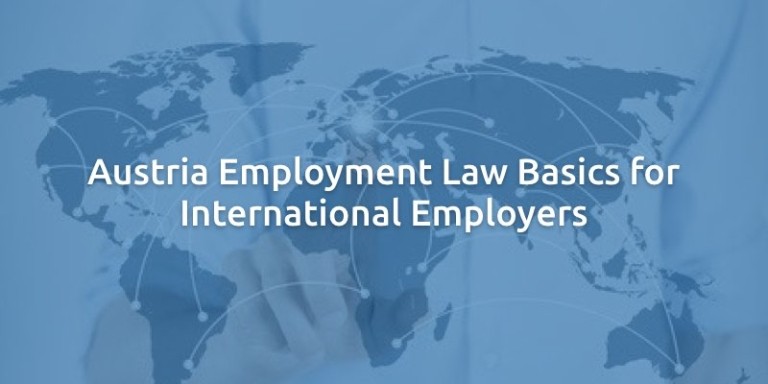What it's like to hire in Australia
Benefits of hiring in Australia
Australia boasts the world’s 14th-largest GDP, which grew steadily for nearly two decades. With rich natural resources, a sound financial system, stable government, and advanced digital infrastructure, Australia offers expanding businesses many growth opportunities.
The country’s imports and exports make up 42% of its GDP, making it a globally connected nation. Between its 14 free trade agreements, roughly 70% of Australia’s trade reaches foreign markets in Asia, Oceania, and further afield.
Australia invests heavily in research and development; R&D spending grew seven percent each year since 2001. In the business sector, R&D investment outpaces Australia’s GDP by two percentage points. The country’s higher education institutions play a central role in innovation, as seven universities sit among the top 100 universities in the world. Businesses across many sectors benefit from its educated talent pool.
Australia boasts the world’s 14th-largest GDP, which grew steadily for nearly two decades.
Challenges when expanding into Australia
Despite one of the world’s most attractive markets for businesses, Australia’s relative remoteness to other Western markets may prove difficult for communication between headquarters and Australian offices; there is a nine-hour difference between Sydney and London, and a 14-hour difference between Sydney and New York.
Businesses must anticipate a 10% federal Goods and Services Tax (GST). While GST-free exclusions exist, determining which products and services meet these criteria is not always straightforward. Companies must become familiar with GST implications to ensure they meet all federal requirements.
There are four main types of business structures in Australia, each of which imparts its own criteria businesses must follow during initial stages. These four structures—sole trader, partnership, company, and trust—offer pros and cons, and businesses must explore which structure is right for them. Companies may restructure as they grow. But just as with initial formation, businesses must ensure familiarity with all criteria, otherwise they invite headaches, fines, and legal troubles.
Australia’s relative remoteness to other Western markets may prove difficult for communication between headquarters and Australian offices
Cultural nuances of doing business in Australia
Arrive at meetings and events on time, and notify attendees if you run late. However, late arrivals and missed deadlines can come off as unprofessional and do not sit well with Australians.
Shake hands with both male and female meeting members; it is rude not to shake hands if someone extends theirs. Address attendees by the name they used when they introduced themselves. When in doubt, “sir” or “madam” is a suitable substitute.
Expect direct, firm communication during a business meeting. Small talk and pleasantries remain common, but discussions center around reaching a solution through productive, straight-forward conversation and negotiation.
Expect direct, firm communication during a business meeting.

Employment Contracts in Australia
Minimum wages and salaries
- Australia’s national minimum wage is A$23.23 per hour or A$882.74 per 38-hour workweek.
- The Fair Work Commission (FWC) sets the national minimum wage each year with implementation after July 1.
Probation period
Employers may place employees on probation periods ranging from a few weeks to a few months, though three to six months remains common. All employees remain entitled to accrue, and access paid leave entitlements during the probationary period.
Bonuses
Bonuses are common in Australia. Employers pay bonuses to recognize either performance or service, though may not reflect a specific pay period. If the bonus does reflect a single pay period, employers add this bonus to the employee’s total earnings for that period.
Termination and Severance Considerations
Minimum notice periods vary depending on the length of the employment relationship:
| Period of Continuous Service | Minimum Notice Period |
|---|---|
| One year or less | One week |
| More than one year, fewer than three years | Two weeks |
| More than three years, fewer than five years | Three weeks |
| More than five years | Four weeks |
- All employees over the age of 45 and with two years’ employment with the employer receive an additional week’s notice.
- However, minimum notice periods may extend beyond these timeframes, depending on the employment contract, enterprise agreement, or award.
Paid Time Off & Benefits
-
Parental leave
- Employees may receive Parental Leave Pay (PLP) from the Australian Government and paid parental leave from their employer. Those who receive both are still entitled to unpaid parental leave.
- Eligible employees receive 18 weeks’ PLP at the National Minimum Wage to care for a newborn or newly adopted child. Recipients may take PLP for a single set period and one flexible period, as of July 1, 2020.
- The initial, set period is 12 weeks and must last for one uninterrupted period within the first 12 months of the child’s birth or adoption. The second, flexible period entitles parents to 30 days’ PLP as negotiated between the employee and their employer. It must take place within the first 24 months of the child’s birth or adoption.
- Fathers and partners (including same-sex couples) receive two weeks’ paid leave from the Australian Government at the National Minimum Wage.
-
Vacation and annual leave
- With the exception of casual employees, all employed persons receive four weeks’ paid annual leave whether employed part- or full-time. Employment contracts and awards may offer different annual leave allowances, but cannot include fewer than four weeks’ paid leave.
-
Sick leave
- All employees—with the exception of casual employees—receive a minimum of 10 days’ paid sick/carer’s leave. Employees’ paid sick/carer’s leave accrual begins on their first day of employment.
Payroll in Australia
Average workweek hours:
- Full-time employees are not obliged to work more than 38 hours per week unless the additional hours meet the Australian Government’s criteria for “reasonable” additional hours.
- Payroll taxes vary between Australian states.
Overtime considerations:
- Overtime pay varies under each award, agreement, or contract. However, some contracts or agreements may stipulate that an employee is entitled to additional time off instead of overtime pay.

Employer Contributions
|
Employer Contribution |
Burden |
|---|---|
|
Superannuation |
11% employee’s salary |
|
Medicare |
0.0% |
|
Total Burden |
11% |
Get a global perspective with our resources
Click on the countries and links below to learn more about a new market or contact us for more information.




